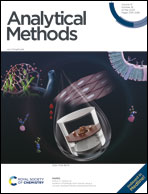Isolation of biofluids from tissues using a vacuum-assisted filtration biomedical device†
Abstract
A biopsy is usually used to remove a piece of tissue from a patient for laboratory testing. The interstitial fluid is taken out at the same time as the tissue sample. Since interstitial fluid flows between cells and capillaries in tissues, similar to blood plasma, it is necessary to separate interstitial fluid from tissues in order to study them separately. Vacuum blood sampling has been used to draw blood into vacuum-sealed tubes, while interstitial fluid can be removed directly from the skin using microneedles with standard pumps. However, no methods are available to separate blood or interstitial fluid from the tissue itself for molecular characterization. In this study, we designed a biomedical device that can separate interstitial fluid from tissue using a vacuum-assisted filtration method. The device has a chamber that collects fluid extracted from the tissue that remains on top of the filter. We characterized the weight change and glycan profiles of tissues before and after vacuum-assisted filtration. The results demonstrate that the biomedical device can remove interstitial fluid and facilitate the analysis of tissue-specific molecules while minimizing information from the interstitial fluid.



 Please wait while we load your content...
Please wait while we load your content...